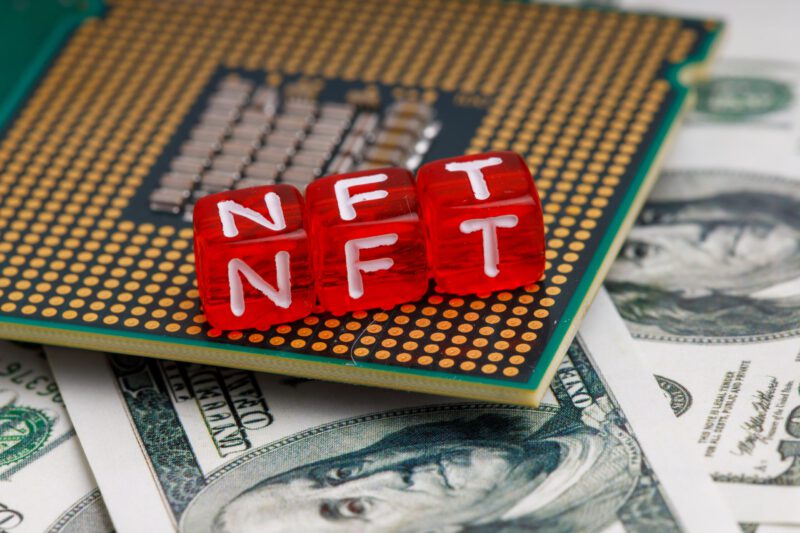Blockchain technology is moving at a blinding speed. NFTs, in particular, took the world by storm, providing investors an opportunity to become digital art collectors.
The whirlwind of NFT madness swept up all kinds in its ascent to blockchain celebrity status. Investors scurried to fall in line, blindly following the Bored Ape’s siren call. Celebrities, eager to expand their wealth and cultural influence (or relevance), jumped at the chance to board the moving train by releasing their own collections. Aspiring elites reached a new level of pretentiousness by flaunting their newly purchased 8-bit CryptoPunks on social media.
Now, after more than a year of being able to process the phenomenon after the initial NFT gold rush, we should all slow down, take a moment for reflection and ask a crucial question: What does the future look like for NFTs?
Why Did NFTs Get So Popular?
According to Nonfungible, an NFT data company, NFTs saw a 26x volume growth year over year in the first quarter of 2021 from 2020, equating to $1.5 billion in sales.
In March 2020, a digital collage NFT by artist Beeple sold for $69 million at auction house Christie’s, securing the NFT as a legitimate — and lucrative — commodity.
The idea behind NFTs makes sense. Around 2013, people realized they wanted to trade assets and collectibles other than Bitcoin using the newly popular blockchain. The problem arose when people had to decide what to do with the shiny new technology. Like financially irresponsible lottery winners, enthusiasts started buying everything in sight, even if it was a pixelated image of a man with a mohawk created by an algorithm.
Shortly after NFTs began appearing on the Bitcoin blockchain, Ethereum created a smart contract layer that allowed buyers to leverage more of the capabilities of blockchain technology. Enter the flood of digital assets like CryptoKitties and bona fide NFT platforms like singer John Legend’s OurSong.
The success is also due, in part, to the historic run of cryptocurrencies Bitcoin and Ethereum. NFTs seemed to offer the perfect solution to people who missed the crypto boat. If one bitcoin was worth $5 in January 2012 and reached an all-time high of over $68,990.90 in 2021, surely a Bored Ape could fetch a cool mill in 2030 — if the AI apocalypse isn’t in full swing yet.
The Fall of a Short-Lived Empire
Cryptocurrency and NFTs have in common the fact that their value is determined by the collective. The difference is, crypto is falling in line with traditional markets more and more as mainstream investors wade into the pool.
In addition to those investors, there is a significant X-factor at play. NFT values are at least in part propped up by hipsters who judge the inherent value of a piece by how sleepy a cartoon ape looks. This alone, however, is not a sound long-term investment strategy.
As the glossy sheen of novelty is stripped away by time, we are beginning to see cracks in the armor of NFTs.
In March 2021, Jack Dorsey, then-CEO of Twitter, auctioned his first tweet as an NFT on the “Valuables” platform run by Cent, a blockchain-powered social media network.
The 15-year-old tweet — “just setting up my twttr” — was purchased by crypto entrepreneur Sina Estavi for 1,630.58ETH, which was worth an estimated $2.9 million at that time, according to NBC.
Estavi attempted to sell the blockchain-authenticated tweet NFT on OpenSea, an NFT trading platform, in April 2022. The highest bid was worth $9,968, a $2,905,867 drop in value.
Herein lies the original sin of NFTs — value is highly subjective and many of the digital pieces stretch the definition of “collector’s item” to its limit.
In mid-May, weekly NFT sales plunged 50% to $255 million from $505 million in the prior week, following a recent crypto crisis that saw Bitcoin fall below $30,000 for the first time since its meteoric rise in 2021.
If established cryptos can’t hold their value through fluctuations in the global economy, there isn’t much hope for the nascent NFT market.
Finding a Home
Verified ownership of digital art does have a place in the world — but not the one in which we live and breathe. The metaverse is becoming more mature as time goes on. Corporations are even setting up shop in the virtual landscape of Decentraland and the Sandbox. Acura, Estee Lauder, HSBC and JPMorgan Chase are just some of the names buying virtual real estate in the metaverse, but the more esoteric NFT could become the most prestigious asset to hold in your virtual hands.
Picture yourself in your Decentraland mansion you recently purchased for a sickening amount of money — paid in full with the latest altcoin, of course. You want to peacock for your comrades by showing off the opulent piece of real estate. But the walls are missing something … Art! So you transfer your Azuki avatar collection from your crypto wallet and plaster them all over the white abode. Now you and your friends can bask in the subjective beauty of anime-inspired headshots.
But that is merely the tip of the iceberg. Digital clothing sold as unique NFTs can adorn your virtual body. You will undoubtedly receive VIP treatment at the growing number of nightclubs in the space. Access to exclusive clubs featuring popular artists is also often provided by purchasing NFT tickets.
While NFTs are still reveling in their moment in the sun, a shift seems be approaching. The combination of high market volatility, subjective value, and an emerging lucidity from the hype of the past few years have led to an increased instability in the NFT market.
They could still rise to greatness, but the current shakiness of the market means a more cautious approach should be taken. Do your homework and know the research. There is still money to be made in the market, but there is also still plenty to be lost.











